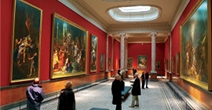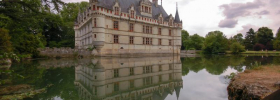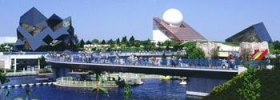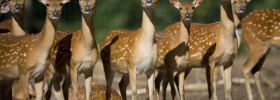 Home
Home- > Tours
- > Rhône-Alpes
- > Savoie
- > Saint-jean-d'arves
- > Circuit in savoie maurienne
Circuit in savoie maurienne
| Topic | Walks |
| Departure | SAINT-JEAN-D'ARVES (73) |
| Details | Once having arrived in the Haute Maurienne, the traveller in quest of the Arc's sources and resources discovers Bonneval (at 1,800 metres altitude), nestling in a countryside which seems to be at the end of the world. The stone and wooden houses are embellished with balconies where "grebons" (agglomerates of hay and cow manure) dry in the sun . Higher upstream, mountain pasture chalets are scattered around the Lenta valley. Thanks to the creation of the Vanoise National Park, these guardians of an agro-pastoral civilisation, managing the rich resources of the mountain to the best of their ability, have benefited from a political environmental protection since the 1970s. |
Return to the source
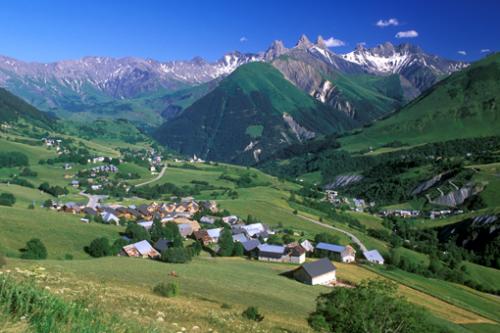
Once having arrived in the Haute Maurienne, the traveller in quest of the Arc's sources and resources discovers Bonneval (at 1,800 metres altitude), nestling in a countryside which seems to be at the end of the world. The stone and wooden houses are embellished with balconies where "grebons" (agglomerates of hay and cow manure) dry in the sun . Higher upstream, mountain pasture chalets are scattered around the Lenta valley. Thanks to the creation of the Vanoise National Park, these guardians of an agro-pastoral civilisation, managing the rich resources of the mountain to the best of their ability, have benefited from a political environmental protection since the 1970s. In 1956, Gilbert André, mayor of Bonneval-sur-Arc and one of the founders of the Vanoise National Park together with the French minister Pierre Dumas, created the National Park Committee (Comité des parcs). He gave special consideration to the professional diversity of the local mountain population so as to support their welfare. "Grebons" are agglomerates of hay and cow manure that are dried outside during the summer months, and used for fuel during the winter months.
Accommodation nearby
Local "lauze" stones
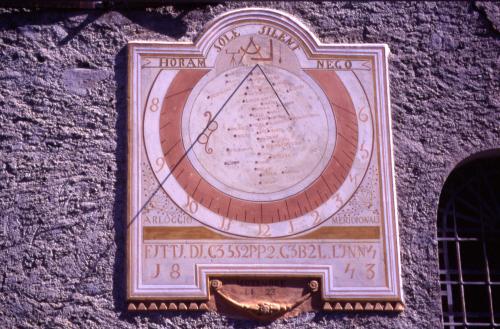
Above Bessans, the cheerful Avérole Valley stretches out between the Charbonnel mountain peak (3,752 metres) and the top of the Albaron (3,637 metres). Along the trail, the local "lauze" or stone slab-covered roofs are characteristic of the village of Vincendières, and of the mountain pasture chalets of the Mottuaz, the Percherses, the Buffaz
Long ago, these meadows were irrigated by a system built according to local traditions, so as to obtain a maximum of fodder in the summer. Further below, downstream, the valley is more austere and the Ribon torrent cuts through it. In these mountain pasture hamlets, including Pierre-Grosse and l'Arcelle, traditional pastoral activites have been preserved.
The Avérole hamlet, one of the highest in the Alps, stands on a plateau at 2,000 metres. With glaciers looming above (Albaron, Bessanèse...), from which noisy waterfalls crash down, the Lombarde Valley leads to Italy via the Autaret mountain pass (3,071 metres). Up until the 1950s, an amusing smuggling practice went on, with locals on either side of the border trading salt and matches against Piedmontese rice and spirits!
Every August 5th, before dawn, the inhabitants of Bessanèse climb up the Ribon valley and cross the Rochemelon glacier, continuing to the summit, where there is a sanctuary dedicated to the Virgin Mary, situated at 3,538 metres. From the other side of the mountain, the Italians join them, arriving on foot from Suse and the Val de Lanzo. At the top they celebrate the memory of Boniface Rotario d'Asti, the first person to climb to the summit in 1368, which he designated as a Marian site, thereby fulfilling a vow he had made in the Hol
Accommodation nearby
Under the sign of the eagle
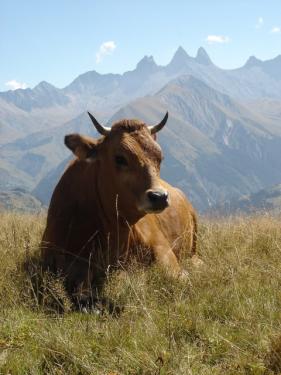
Farewell to carriage-bearing porters and the "ramasses" (or "pick-ups") of old! The "Mont Cenis ladders", a source of great Napoleonic pride, reached the top of the mountain pass in 1805 (2,084 m). On the green plateau dominated by the peak of the Ronce (3,612 m) and the pinnacle of the Bard (3,168 m), and harbouring an immense dammed lake, the high mountain pastures of Mont Cenis are so vast that 1, 200 dairy cows can graze there during the summer period
In olden days, in order to reach the pass, animal-drawn coaches and carriages had to be dismantled, then the harnessing material had to be loaded onto the back of mules. Passengers were often carried. The trip lasted an average of five hours and required the services of between 2 and 8 porters, depending on the weight of the travellers!
In winter, the descent from the Mont Cenis pass to Lanselbourg could be made on a kind of toboggan or sled called "ramasses" or "pick-ups." These were driven by mountain guides called "Marrons" or "Chestnuts." The ten-minute glide down guaranteed a range of extraordinary sensations!
Long ago, this rustic countryside featured a natural lake measuring 50 hectares, between the mountainsides. This was before the building of the current Mont Cenis dam, which has increased the expanse of the lake to 668 hectares.
Old strategic roads give one the opportunity to appreciate the Nordic beauty of these vast, windswept landscapes. Long ago, these roads were travelled by Alpine sentries on both sides of the border.
Since 1985, every August, seven villages in the Haute Maurienne-Vanoise district (Bramans, Sollières-Sardières, Termignon la Vanoise, Val Cenis-Lanslebourg, Val Cenis-Lanslevillard, Bessans and Bonneval-sur-Arc) have got together to organise a renowned astronomy festival, where a national astronomy book prize is awarded. Observation evenings and other theme-related gatherings are organised
Accommodation nearby
In hannibal's tracks
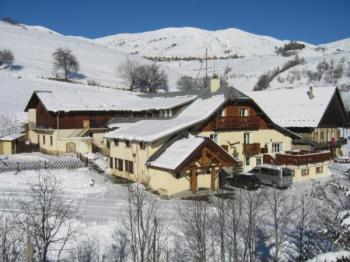
Did the general's elephants pass this way on their route from Carthage?
Passing between walls of gypsum and resinous forests, the roads of the Ambien valley lead to the soft mountain meadows of the Petit Mont Cenis. The valley is never more enchanting than in autumn, when it shimmers with colour, larch trees dropping their golden needles to the earth and the first snows covering the peaks of Mont Froid, Mont d'Etache and Mont Bellecombe. Established on the banks of the old Roman road, the Romanesque church of Saint Pierre d'Extravache seems to defy the Dent Parrachée, which makes a dramatic backdrop to the scene.
Saint Pierre d'Extravache, the oldest standing church i n the Maurienne, was reputedly founded by Saint Peter's disciples. Rising from this 10th-century edifice, partly destroyed by fire in 1803, is the original church tower. The austerity of its design and the perfect half-circle of the apse makes a striking contrast to the ruined nave. In the apse there are still traces of early 17th-century frescoes.
These peaceful valleys make the perfect terrain for cross-country skiing. Hervé Flandin, local boy turned Olympic medal winner in Lillehammer in 1994, played a key role in the revival of this winter sport and, in the process, he has contributed to the development of the Biathlon.
Around 218 BCE, after a lengthy detour, Hannibal finally crossed the Alps, with 37 elephants, to attack the Romans on their own territory. Although the identification of the exact mountain pass is still open to conjecture, it is generally agreed that Hannibal crossed the Clapier mountain pass.
Accommodation nearby
Stories of water
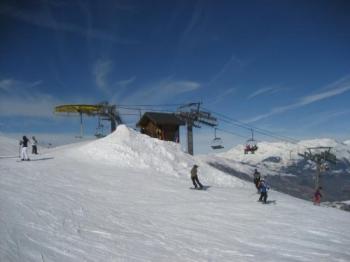
It's water, water everywhere in Saint André! Situated on the south-facing slope, as an introduction to the Vanoise mountain massif, the village is comprised of about fifteen little hamlets situated between torrents rushing down the mountain to join the Arc. This hydraulic manna has for a long time fed some dozen mills, built in dry stone. These structures are reinforced by larch beams intersecting at angles and are protected from the weather by a "lauze" stone slab.
The ancient mills in the hamlet of Pralognan have been restored in recent years thanks to an association created in 1992. Two of them can now be visited.
After the hamlet of Polset, the trail leads to the first gateway to the Vanoise National Park, the refuge at L'Orgère.
Accommodation nearby
Counting sheep
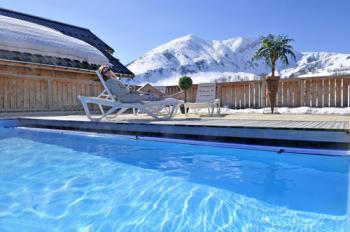
In the Glandon Valley, Saint Alban des Villard lies in glorious isolation off the main road. In 1874, the municipality refused to allow the road to pass across land which could be used for agricultural purposes. The population diminished as rapidly as snow in the warm sun, but the hamlets, with their traditional "block houses" and lofts have been preserved. In summer, flocks of sheep (reared for their meat) roam across the high mountain meadows.
The thick stone walls of the "block houses" in Les Villards support a heavy framework covered in sheet metal. The interior of the structure consists of an immense barn (taking up three-quarters of the space), which houses the animal fodder that is so indispensable in a sheep-rearing region with such long winters.
A hike to La Croix mountain pass (2,529 m) begins at the Glandon pass, where visitors will discover its high mountain chalets. In this area, the flocks are guarded by "Pastou" dogs renowned for their shaggy coats of white fur. Their role is not to herd the sheep, but to protect them from a potential attack by wild beasts. Be careful to keep a safe distance from these dogs as they can be very aggressive!
Accommodation nearby
Montsapey
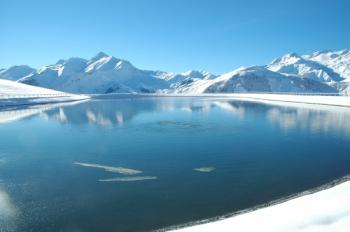
The Grand Arc massif, the Lauzière mountain chain... It is in the heart of these magnificent landscapes that the village of Montsapey appears, suspended on a southern-facing slope at an altitude of 1,150 metres. Its hamlets, clinging to the slope, such as Tieulever or Le Villaret, have conserved their traditional charm. To best appreciate this rustic environment, a marked "balcony" path connects the two hamlets, and passes by high mountain chalets (Ruelles, Perrière, Vénitier and Le Tour).
A special theme circuit begins at the village, showing aspects of summertime alpine pasture life up to the mid-20th century.
The "Lac Noir" (Black Lake) circuit (2,010 m) begins at Tieulever (1,280 m), a hamlet of Montsapey. On this walk visitors will discover the different natural landscapes of the Grand-Arc massif: forests, meadows, mountain ridges, ponds and lakes.
Every July, "Les Arts Jaillissants", an internationally famous festival of classical and Baroque music, is organised in Saint Barthélemy church (1866). The church is renowned for its murals and its majestic Baroque altarpiece.
Accommodation nearby
The play of needles
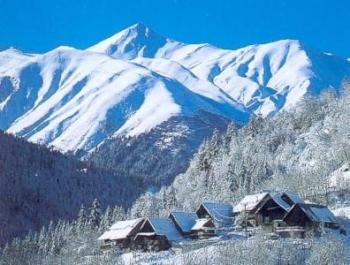
The Mouse's Head" ("Tête de souris"), "The Cat's Ears" ("Oreilles de chat")... The needle-like peaks of the Arves take on different identities according to the vantage point of the viewer and the light. The villages of Saint Sorlin and Saint Jean d'Arves hover in the shadow of these great stars. Up until World War II, their vast alpine pastures guaranteed a flourishing agro-pastoral economy. Pastoral life in the high mountain meadows of the Ornon mountain pass, near Saint Jean d'Arves, Longecombe or Ouillon (accessible from the Croix de Fer pass), still revolves around the rhythm of the traditional summer grazing season.
In mid-June, departing from the hamlet of Chambons, the mountain pasture farmers perpetuate the tradition of the "emmontagnée", where a blessing is performed before the animals are brought up to graze in the summer pastures.
Don't miss the cow milking in the alpine pastures at the end of the afternoon! Thanks to this daily ritual, the Arves milk cooperative produces its famous Beaufort cheese.
One distinctive feature of the Saint Saturnin church in Saint Sorlin d'Arves is its mortuary wreaths, decorated with tiny pearls. The parish faithful have hung t he wreaths on the walls rather than laying them on the graves, so that they will not be destroyed by the snow.
Accommodation nearby
Between two blues
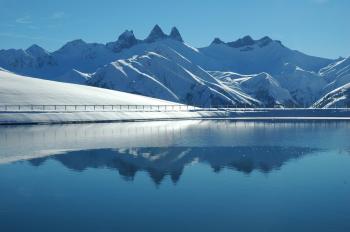
Termignon appears to be a large village coiled along a meandering section of the Arc River, between fields of rye, mountain pastures and forests, but in reality its surface area spreads over 180 km2, from behind Mont Cenis up to the heart of the Vanoise National Park. Its immense mountain pastures are roamed by flocks of sheep and herds of cattle during the summer months. The mountain pastures of Entre-deux-Eaux offer particularly pleasant natural alpine grazing for the local "tarine" cows.
The "tarine" race can be distinguished by its tawny wheat-coloured coat, as well as the brown rings around the eyes and on the extremities of the body.
In addition to Beaufort, a government quality-controlled cheese (AOC, "Appellation d'Origine Contrôlée"), the cheese cooperatives also produce a blue cheese called Termignon. This blue is made fom the milk of the "tarine" cows from Entre-Deux-Eaux. It is a rustic, veined blue that is highly sought after. The few mountain chalets which still produce this cheese in very small quantities guard its recipe with the utmost secrecy. The cheese is made according to traditional techniques dating back to the 18th century.
More than just a museum, the house of the Vanoise, in Termignon, is a centre which initiates visitors into the art of mountain living and invites them to reflect on the mountain environment.
At the approach to the bridge over the Donon River, the Monument to the Dead of World War I has foregone the theme of the "poilu" (or French soldier) "launching an attack on the enemy" for another more moving image: that of a woman grieving for a son or a husband. "La pleureuse" ("The Weeper") is the work of the Genevan-born sculptor Jaggi.
Up the mountain from Termignon, a path leads to the refuge at Plan du Lac (2,364 m), one of the five "gateways" to the Vanoise National Park, where visitors can enjoy an exceptional panoramic view. In the past, this trail, called the "draille", was used by flocks and herds during the seasonal migration from the mountain pastures. It passes by the hamlet of Chavière.
Accommodation nearby
Latest news on : Circuit in savoie maurienne
Tourism near
 Visit the city of Saint-jean-d'arves
Visit the city of Saint-jean-d'arves - 2 Museum
- 2 Monuments
Tours
 Tour to explore Savoie
Tour to explore Savoie
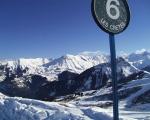 Le Corbier
Le Corbier
 Walks around Albiez-Montrond
Walks around Albiez-Montrond






















